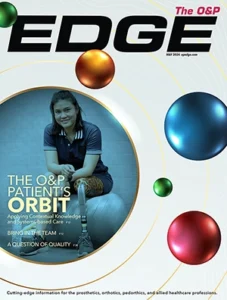It’s still technically summer until September 23 this year, but the Labor Day holiday usually marks the unofficial start of autumn and a shift into our fall routines. It’s a change that means leaving behind summer vacations and days at the beach or the pool and embracing the routine of school schedules or, one of my personal favorites, weekend football games on tv. It may even tempt you to leave behind your favorite iced beverage for a cup of hot tea or that love-it-or-hate-it pumpkin spice latte. Speaking of which, by the time you read this, you may have recently enjoyed a late-summer cup of coffee with a colleague as you discussed advances in O&P or tips for improving your business you learned about in sessions at the American Orthotic and Prosthetic Association National Assembly.
In this issue, our experts add to your knowledge with their reflections on areas of O&P lower-limb practice.
Support authors and subscribe to content
This is premium stuff. Subscribe to read the entire article.





